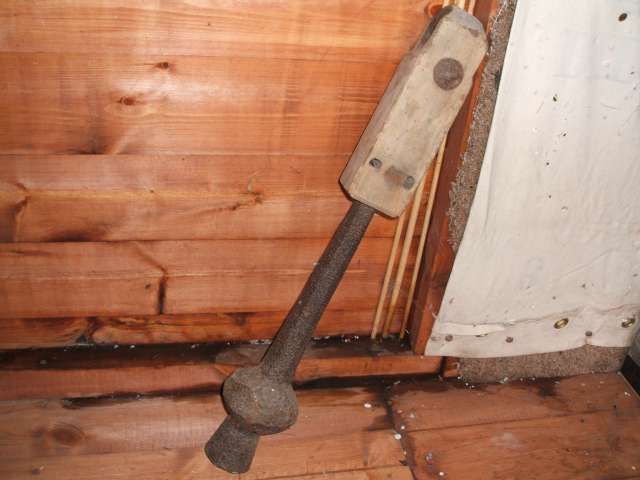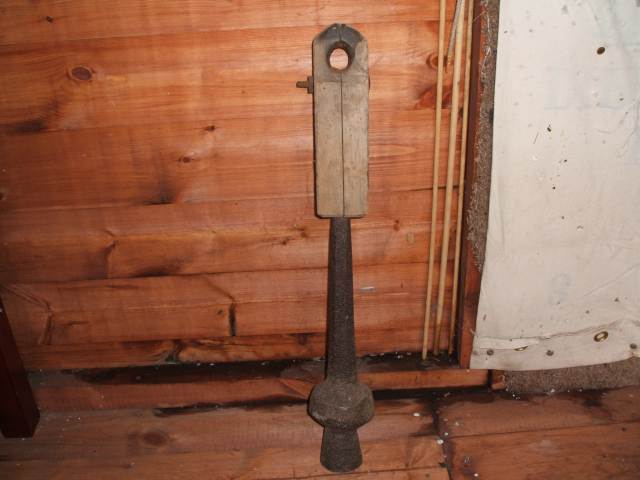
The Mediaeval Clapper
The Mediaeval Clapper is everything which its name suggests. A twenty-five inch bell clapper which dates from sometime during the Mediaeval period, meaning it could date from anytime between the years AD 1066 (Battle of Hastings)- the beginning of the 'Mediaeval' or 'Middle Ages' era to AD 1485 (Battle of Bosworth Field) the end of the Mediaeval period and the beginning of the 'Tudor' dynasty.

Unfortunately the year this clapper was made is unknown, it can only be estimated that it was cast sometime between the 11th and 15th Centuries. This clapper could be as old as 950 years of as recent as 530 years.
Early clappers such as this have a wooden bracket at the top, this bracket is two halves of hardwood (probably Elm) which fit together over the top of the metal clapper, a large hole passes through the top of this bracket which is for the bells 'staple'. The staple is situated inside the top of the bell and is designed to hold the clapper in place while allowing it to swing, the two halves of the clappers bracket fit together over the staple and are then bolted together, this allows the clapper to swing freely inside its bell.
More recent clappers do not have a wooden bracket but are made entirely of metal, instead of a wooden bracket the clapper is one single piece of Iron and is hung in much the same way as its earlier counterparts. It was during the 15th and 16th Centuries that this change came about.
During the 17th Century Church Bellringing underwent a sort of 'Industrial Revolution' with new and radical changes to how bells are hung and rung being developed. Complex methods of ringing where devised and it was the time when 'Change Ringing' was invented, this was because the way bells where hung where dramatically changed- the concept of full circle ringing was introduced with the 'Stay and Slider' mechanism enabling church bells to be 'set' in the upturned position, complicated 'methods' where composed and the 'full circle' way of bellringing is almost unique to the British Isles.

|